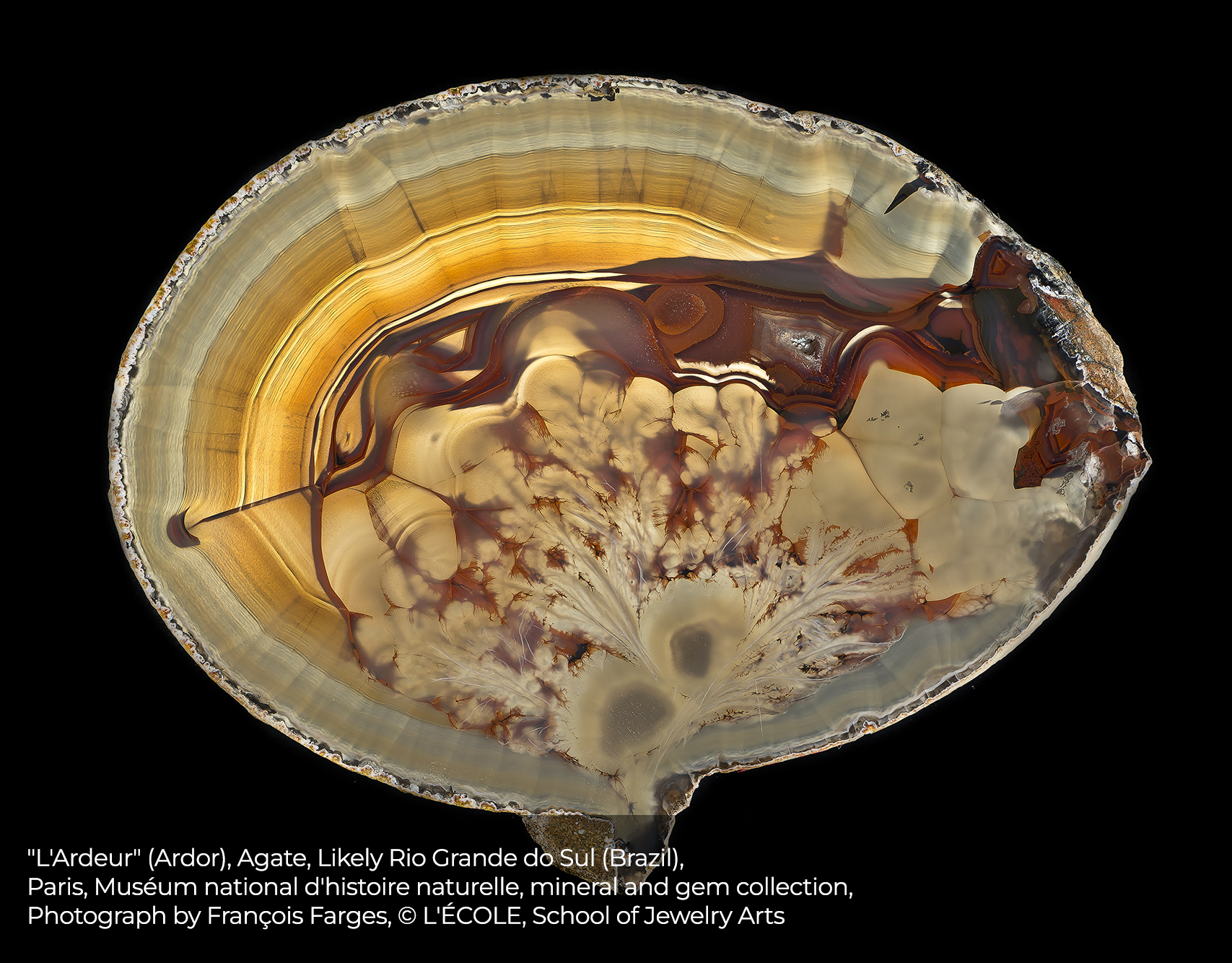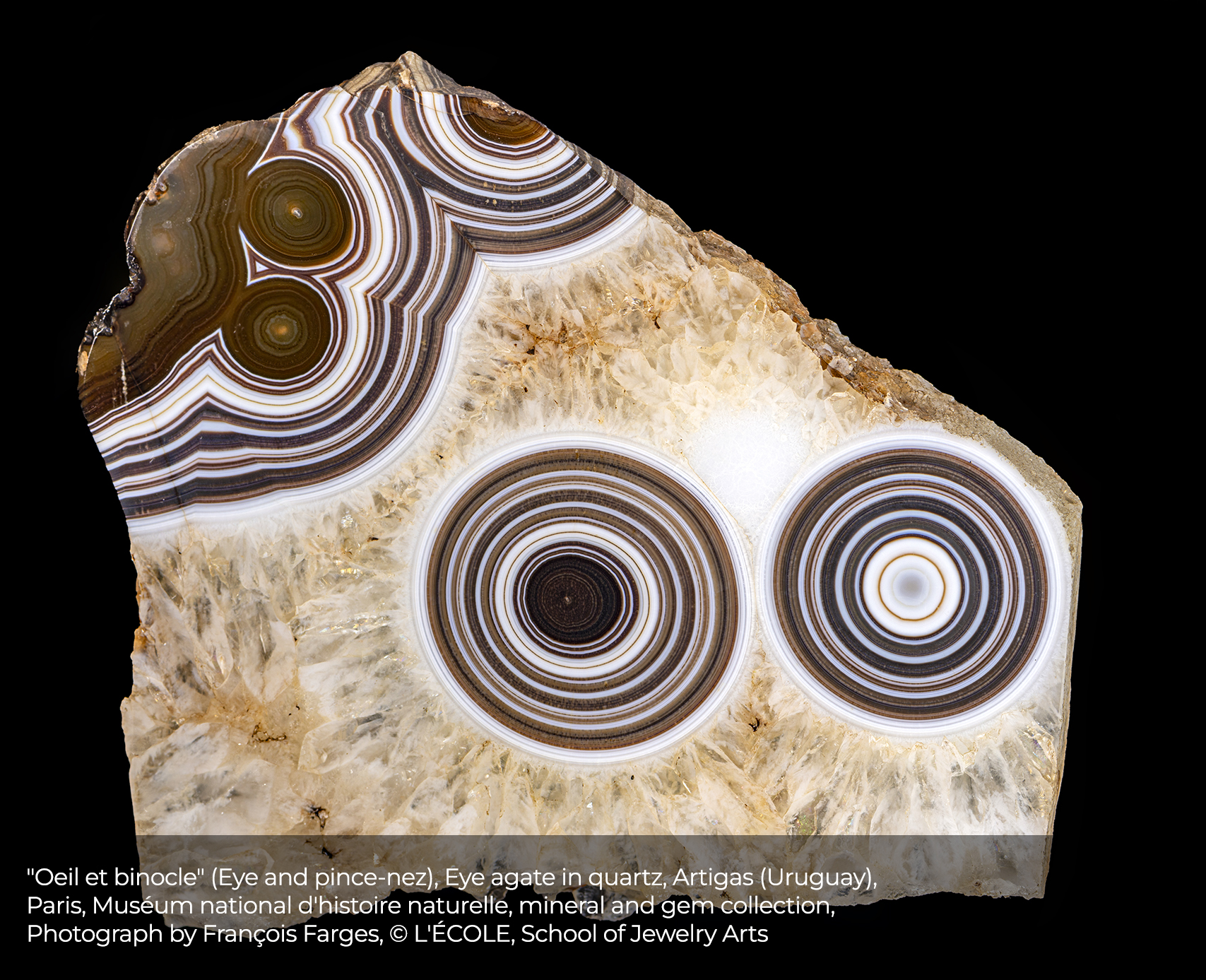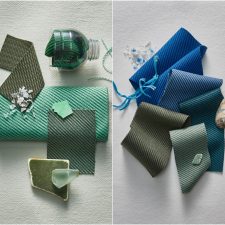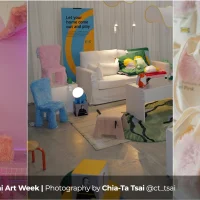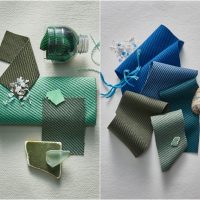L’ÉCOLE, School of Jewelry Arts, in partnership with France’s Muséum national d’histoire naturelle (MNHN), presents a retrospective dedicated to the collection of the great twentieth-century French writer Roger Caillois (1913-1978) from November 6, 2025 to March 29, 2026.
The exhibition includes iconic texts penned by Roger Caillois and nearly two hundred minerals from his collection, now part of the MNHN’s collections. This exceptional dialogue between science and poetry is the work of Pr. François Farges, PhD, curator of the exhibition and scientist in charge of the MNHN’s collections of gems and objets d’art.
With this exploration of his phantasmagoric universe, L’ÉCOLE, School of Jewelry Arts features one of the most brilliant and singular minds of the twentieth century for the very first time.
An essayist, grammarian and poet, Roger Caillois devoted part of his work to better comprehending the connections between nature and art. Driven by his insatiable curiosity, scientific precision and boundless imagination, this master of the French language collected stones with passion and erudition for over twenty-five years. And it was the minute contemplation of minerals that inspired much of his reflections and poetic genius.
The exhibition “Stones and Reveries: The Poetry and Minerals of Roger Caillois” delves into the writer’s intimate ties to the mineral world. It includes iconic texts penned by Roger Caillois and nearly two hundred minerals from his collection, now part of the France’s Muséum national d’histoire naturelle’s collections.
We are delighted to shine a light on a fascinating, little-known literary figure. Our partnership with France’s Muséum national d’histoire naturelle, which houses Roger Caillois’s collection, illustrates our shared commitment to disseminating knowledge. We hope to surprise and amaze our visitors by inspiring them to reverie before the beauty of Roger Caillois’s minerals and the richness of his mind. This exhibition will also be accompanied by a new editorial partnership with Éditions Gallimard.
— Élise Gonnet-Pon, Managing Director of L’ÉCOLE, School of Jewelry Arts France & Europe
A major center of geology and mineralogy, the Muséum houses exceptional collections of great scientific, aesthetic and historical value, including the renowned Roger Caillois collection. Made possible by a partnership between the Muséum and L’ÉCOLE, School of Jewelry Arts, this exhibition offers an immersion in the fascinating universe of a poet of stones who dedicated his life to unveiling their mysteries. Forever true to our mission of sharing knowledge, we are delighted by this project, which bears witness to the strength of the ties between our two institutions.
— Gilles Bloch, President of the Muséum national d’histoire naturelle
An Erudite Collector
Roger Caillois was a man of culture and a poet of the twentieth century, but also a historian of religions and major social analyst of games, celebrations, dreams and fantasy. A brilliant career at UNESCO, where he contributed to cultural development from 1948, led him to Asia and the Americas. These journeys nourished his curiosity while enriching his knowledge and feeding his fascination for minerals.
Between 1952 and 1978, Roger Caillois patiently assembled a remarkable collection of stones, or “crossroads objects” or “fairy objects,” as he liked to call them, illustrating the depth of his aspirations. Today this invaluable collection, the lion’s share of which is housed at France’s Muséum national d’histoire naturelle, in large part thanks to the support of L’ÉCOLE, School of Jewelry Arts, counts more than one thousand specimens.
Roger Caillois’s passion for minerals resulted in writings of an exceptionally poetic nature. From 1959 onwards, he published essays inspired by his collection of “picture stones” including The Writing of Stones, his most renowned work, which was first printed in 1970. Elected to the Académie Française the following year, he continued to further his exploration of the mineral world until his sudden death in 1978.
An Extraordinary Mineral Reverie
Nearly two hundred specimens of Roger Caillois’s precious collection will be on display, many for the very first time.
The exhibition explores the writer’s sources of inspiration, starting with Patagonia, which he discovered during his exile in Argentina in 1939-1945, and which aroused his interest in picture stones – a kind of rock whose shape or natural motifs evoke images or landscapes. Visitors will follow Roger Caillois on his travels to Japan and China and discover his fascination for Asian cultures as well as his reinterpretation of the “mystical hikes” of Chinese scholars such as the Song-dynasty Chinese poet Mi Fu (1051 – 1107), who encouraged mental reverie through contemplation of the petrified world. This predilection for drawing parallels between mineral forms and the human experience is reminiscent of Leonardo da Vinci, whose influence is illustrated by pietra paesina (or ruin marbles), landscape marbles that resemble engravings and raise the question of a rivalry between artist and nature.
A discerning eye, Roger Caillois was close to the Surrealists in the early thirties and friends with André Breton. He viewed nature as a painter (a concept covered by the Latin phrase Natura pictrix), recognizing its ability to generate abstractions well before conceptual art and the first readymades. Roger Caillois therefore cultivated a preference for the “unintentional works of somnambulistic nature”: the enigmatic patterns of septaria appearing to him as “messageless hieroglyphs” while onyx, through its blackness, conjured imaginary nights. Dendrites permeated with vegetation and agates with multicolored bands conveyed a wealth of images. Never shown before, the “secret sculptures” that he assembled from minerals like improbable chimeras have been reassembled for the exhibition.
Between scientific precision and the world of dreams, Roger Caillois sought forgotten alphabets and miniature cosmic landscapes in stones. The exhibition “Stones and Reveries: The Poetry and Minerals of Roger Caillois” also explores Roger Caillois’s “Twilight Images,” in which he embraced the mystical, seeing masks, ghosts, “wounds” and landscapes from worlds beyond.
This introspection culminates with Pierres anagogiques (Anagogical Stones) (French only) or a volume that was nearly complete upon the author’s death on December 21, 1978; it would likely have been his final literary work. These texts about stones and their spiritual or mystical interpretations (in the spirit of the Greek word anagoge, meaning “climb” or “ascent”) were rediscovered in 2023 by François Farges in obscure archives that are now housed at Vichy’s municipal Médiathèque. For the very first time, a portion of these forgotten texts will be displayed alongside corresponding stones from Roger Caillois’s collection.
This exhibition is the result of unprecedented research, which has allowed us to foster a dialogue between Roger Caillois’s exceptional stones and texts, many of which are being displayed for the very first time. It provides unique insight into the mind of a man whose collection unleashed a poetic expression of a rare intensity, transforming the mineral into a mirror of his thoughts and deepest aspirations.
— Pr. François Farges, PhD, Curator of the exhibition, professor at France’s Muséum national d’histoire naturelle and scientist in charge of the MNHN’s collections of gems and objets d’art
Publication
Pierres anagogiques, Roger Caillois – The exhibition “Stones and Reveries: The Poetry and Minerals of Roger Caillois,” conceived in partnership with France’s Muséum national d’histoire naturelle, will be accompanied by the publication of a landmark work, Pierres anagogiques, copublished by L’ÉCOLE, School of Jewelry Arts and Éditions Gallimard. Available in French, this unprecedented volume, which includes a majority of texts rediscovered by François Farges in 2023, could likely have been Roger Caillois’s last great poetic project.
320 pages / Language: French A standard edition will be available at L’Escarboucle, the bookshop of L’ÉCOLE, School of Jewelry Arts and other bookshops in France (49 €). A collector’s edition of 100 numbered copies will be available exclusively at L’Escarboucle, the bookshop of L’ÉCOLE, School of Jewelry Arts (180 €). 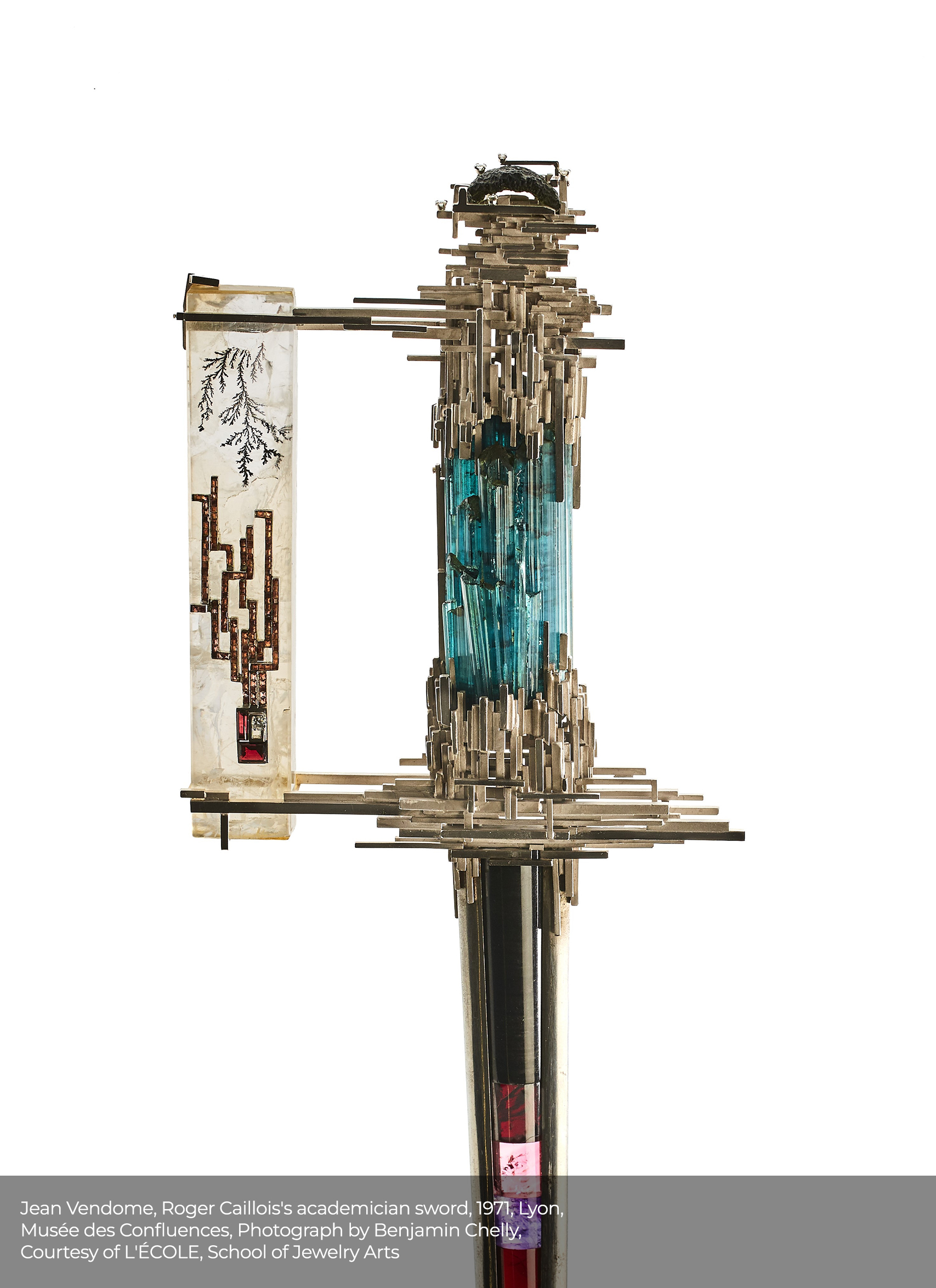
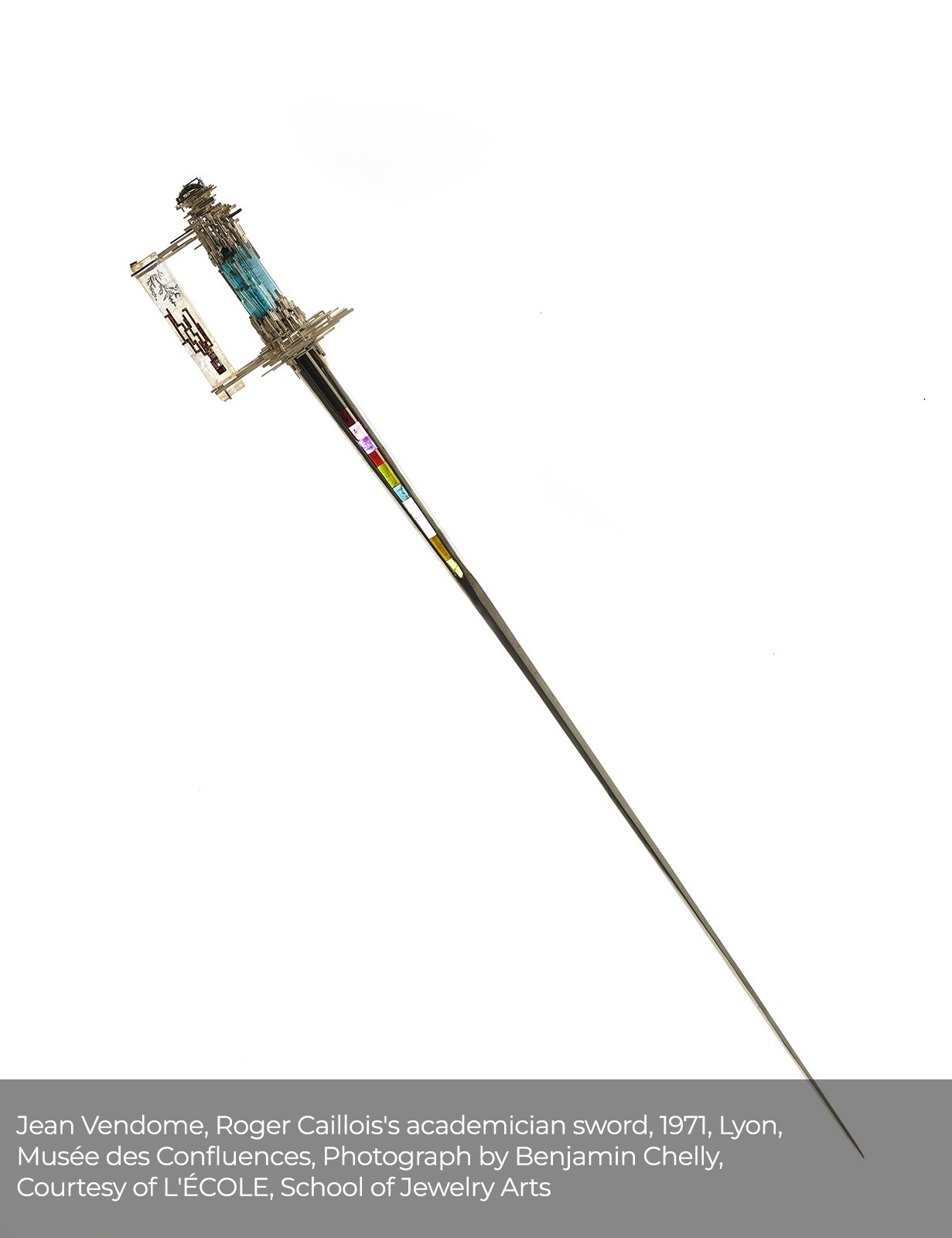
Scientific Curator
François Farges, curator of this exhibition, is Professor at France’s Muséum national d’histoire naturelle and scientist in charge of the MNHN’s collections of gems and objets d’art.
Renowned mineralogist François Farges has led major research projects on iconic historical gems like Louis XIV’s blue diamond and the great black diamonds and has helped reproduce lost treasures. Formerly a professor at Stanford University, he also served as research director at the École Nationale Supérieure des Mines de Paris. Author of more than one thousand international publications, he has received numerous awards. He is also a renowned photographer of minerals and gems, and a special issue of the prestigious FMR magazine is dedicated to his photographs. He has curated major exhibitions including “Pierres précieuses” (Gems) at France’s Muséum national d’histoire naturelle, organized in partnership with Van Cleef & Arpels.
Cultural Programming
Talks on the exhibition “Stones and Reveries: The Poetry and Minerals of Roger Caillois”
Monday 1st December, 2025 at 7 p.m. – MNHN Auditorium Tuesday 3rd February, 2026 at 8 p.m. – Hôtel de Mercy-Argenteau Monday 23rd February, 2026 – online
Encounters of L’Escarboucle on the book Pierres anagogiques Wednesday 28th January, 2026 at 7 p.m – Hôtel de Mercy-Argenteau
Round table discussion on the academician sword of Roger Caillois Tuesday 3rd March, 2026 at 8 p.m – Hôtel de Mercy-Argenteau
Children workshop: Crowns and Swords (6-8 years)
Photography exhibition: La Susceptibilité des Roches. Echoing the exhibition, Juliette Agnel takes over the first floor of L’ÉCOLE, School of Jewelry Arts on the occasion of the festival Photo Days from November 6th to 30th.
PRACTICAL INFORMATION
“Stones and Reveries: The Poetry and Minerals of Roger Caillois” November 6, 2025-March 29, 2026 L’ÉCOLE, School of Jewelry Arts, With the support of Van Cleef & Arpels Hôtel de Mercy-Argenteau 16 bis boulevard Montmartre, Paris 9
Free admission, upon reservation
Free visits
Tuesday-Sunday, 11 a.m.-7 p.m. Open late on Thursdays, until 9 p.m.
Free guided tours
For adults:
Tuesdays, Wednesdays, Fridays and Sundays at 3:15 p.m. and 4:15 p.m., and Thursdays at 6:15 p.m. and 7:15 p.m.
For children 7 and older:
Saturdays at 3:15 p.m. and 4:15 p.m., with additional tours during school vacations
L’ÉCOLE, School of Jewelry Arts
www.lecolevancleefarpels.com | @lecolevancleefarpels
Established in 2012 with the support of Van Cleef & Arpels, L’ÉCOLE, School of Jewelry Arts aims to introduce the public to all aspects of jewelry culture through various activities: courses, workshops, talks, exhibitions, books and podcast. Activities at L’ÉCOLE cover three main areas: the history of jewelry, the world of gemstones and the savoir-faire of jewelry-making techniques.
The courses are open to everyone, with no prerequisites: complete beginners as well as enlightened amateurs, collectors and those with a curiosity for the world of jewelry. Students experiment with gestures, skills and tools, guided by their lecturers – art historians, gemologists and craftsmen.
L’ÉCOLE now has four permanent addresses: in Paris, Hong Kong, Shanghai and Dubai. Moreover, since its inception, L’ÉCOLE regularly travels abroad, in Europe, America, Asia and the Middle East, for talks, exhibitions or travelling course programs that can last one to three weeks. L’ÉCOLE, School of Jewelry Arts therefore contributes to the promotion and visibility of jewelry culture on an international scale.
Muséum national d’histoire naturelle
www.mnhn.fr | @le_museum
A research center, museum and university, the Muséum has over the last four centuries remained committed to studying geological, biological and cultural diversity and the relationship between humans and nature.
With more than 68 million specimens, its collections are in part exhibited at twelve locations throughout France: its museums, libraries, geological and prehistoric sites and botanical and zoological gardens. The Muséum’s collections of minerals, rocks and precious gems are the oldest in the world, and it has provided a forum for the emergence of major fields including mineralogy, crystallography and gemology since the eighteenth century.
Preserving this rich heritage is central to the Muséum’s mission, which hosts collections of figures who revolutionized the approach to these objects, including that of the writer Roger Caillois.
All images are courtesy of and copyrighted to L’ÉCOLE, School of Jewelry Arts
Tags: 1910s, 1913, 1978, 20th century, Art Deco Jewelry, art history, artisanal, Artisans, arts, arts crafts, Benjamin Chelly, culture, Élise Gonnet-Pon, Exhibition, exhibitions, fashion, fashion history, France, gemology, gems, gemstones, history, jewelers, jewellery, jewelry, jewelry culture, jewelry design, luxury brands, luxury fashion, luxury living, Maisons Van Cleef & Arpels, minerals, MNHN, Muséum national d'histoire naturelle, Retrospective, Roger Caillois, School of Jewelry Arts, Top, top jewelers, trends, Van Cleef & Arpels, vintage, vintage-inspired





